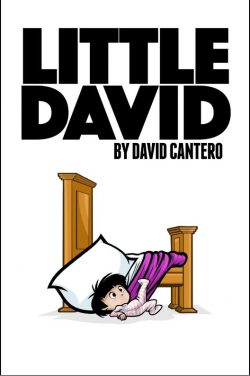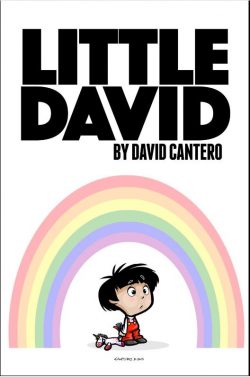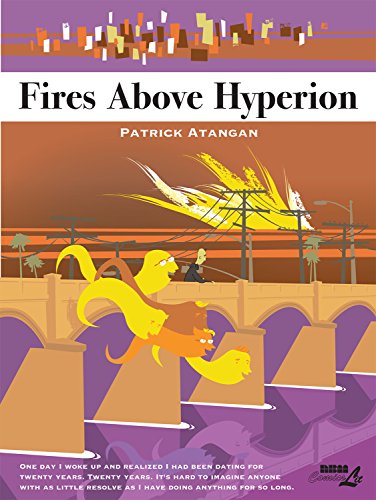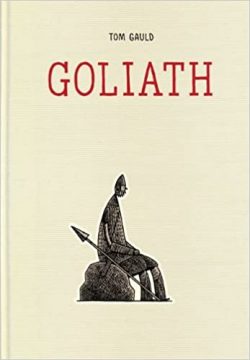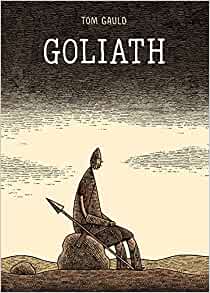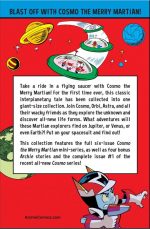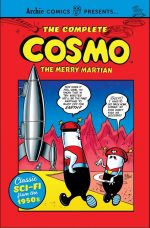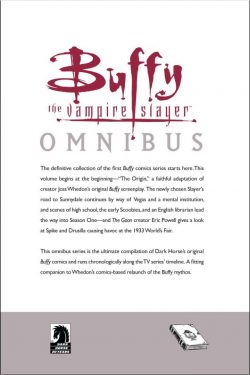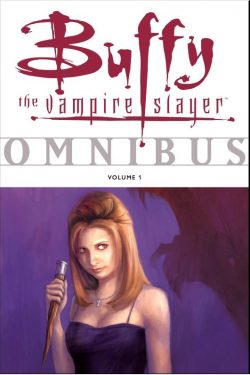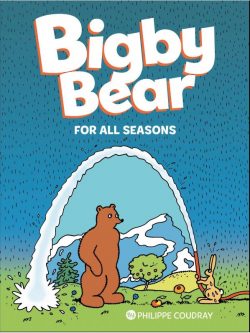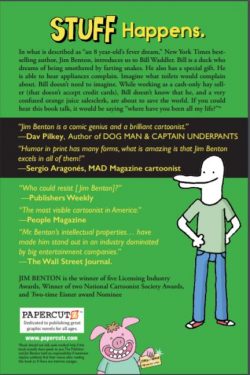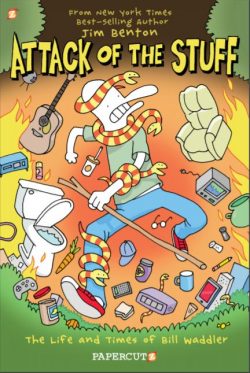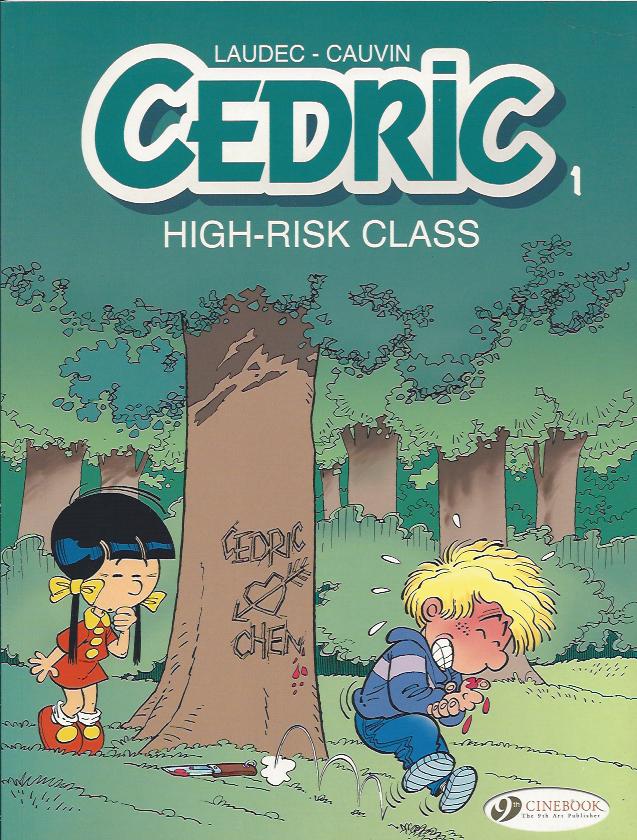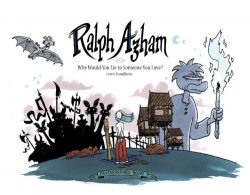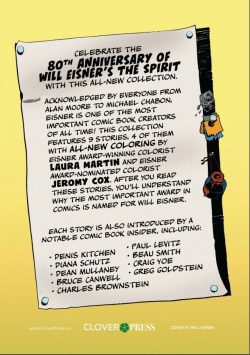
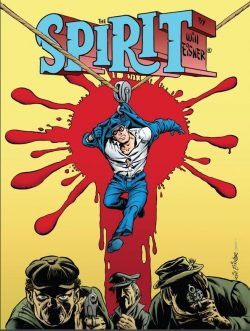
By Will Eisner & various (Clover Press)
ISBN: 978-1-95103-805-2 (TPB)
It is pretty much accepted today that Will Eisner was one of the prime creative forces that shaped the comicbook industry, but still many of his milestones escape public acclaim in the English-speaking world.
William Erwin Eisner was born on March 6th 1906, in Brooklyn, and grew up in the ghettos of the city. They never left him. After time served inventing much of the visual semantics, semiotics and syllabary of the medium he dubbed “Sequential Art†in strips, comicbooks, newspaper premiums and instructional comics, he then invented the mainstream graphic novel, bringing maturity, acceptability and public recognition to English language comics.
In 1978 a collection of four original short stories in comics form released in a single book, A Contract With God and Other Tenement Stories. All the tales centred around 55 Dropsie Avenue: a 1930’s Bronx tenement housing poor Jewish and immigrant families. It changed the American perception of cartoon strips forever.
Eisner wrote and drew a further 20 further masterpieces, opening the door for all other comics creators to escape the funny book and anodyne strip ghettos of superheroes, funny animals, juvenilia and “family-friendly†entertainment. At one stroke comics grew up.
Eisner constantly pushed the boundaries of his craft, honing his skills not just on the legendary Spirit but with years of educational and promotional material. In A Contract With God he moved into unexplored territory with truly sophisticated, mature themes worthy of Steinbeck and F. Scott Fitzgerald, using pictorial fiction as documentary exploration of social experience.
Restlessly plundering his own childhood and love of human nature as well as his belief that environment was a major and active character in fiction, in the 1980s Eisner began redefining the building blocks unique to sequential narrative with a portmanteau series of brief vignettes that told stories and tested the expressive and informational limits of representational drawings on paper.
From 1936 to 1938, Eisner worked as a jobbing cartoonist in the comics production firm known as the Eisner-Eiger Shop, creating strips for domestic US and foreign markets. Using the pen-name Willis B. Rensie he conceived and drew the opening instalments of a huge variety of characters ranging from funny animal to historical sagas,
Westerns, Detectives, aviation action thrillers… and superheroes – lots of superheroes …
In 1940 Everett “Busy†Arnold – head honcho of the superbly impressive Quality Comics outfit – invited Eisner to take on a new challenge. The Register-Tribune newspaper syndicate wanted a 16-page weekly comic book insert to be given away with the Sunday editions. Despite the terrifying workload such a commission demanded, Eisner jumped at the opportunity, creating three strips which would initially be handled by him before two of them were handed off to his talented assistants. Bob Powell inherited Mr. Mystic whilst masked detective Lady Luck fell into the capable hands of Nick Cardy (then still Nicholas Viscardi), and later the inimitable Klaus Nordling.
Eisner kept the lead strip for himself, and over the next twelve years The Spirit became the most impressive, innovative, imitated and talked-about strip in the business. In 1952 the venture folded and Eisner moved into commercial, instructional and educational strips. He worked extensively for the US military in manuals and magazines like P*S, the Preventative Maintenance Monthly, generally leaving comics books behind.
In the wake of “Batmania†and the 1960s superhero craze, Harvey Comics released two giant-sized reprints with a little material from the artist, which lead to underground editions and a slow revival of the Spirit’s fame and fortune via black and white newsstand reprint magazines. Initially, Warren Publishing collected old stories, even adding colour sections with painted illumination from such contemporary luminaries as Rich Corben, but with #17 the title reverted to Kitchen Sink, who had produced the first two underground collections.
Eisner found himself re-enamoured with graphic narrative and saw a willing audience eager for new works. From producing new Spirit covers for the magazine (something the original newspaper insert had never needed) he became increasingly inspired. American comics were evolving into an art-form and the restless creator finally saw a place for the kind of stories he had always wanted to tell.
He began crafting some of the most telling and impressive work the industry had ever seen: first in limited collector portfolios and eventually, in 1978, A Contract With God.
If Jack Kirby is American comics’ most influential artist, Will Eisner undoubtedly was – and remains – its most venerated and exceptional storyteller. Contemporaries originating from strikingly similar Jewish backgrounds, each used comic arts to escape from their own tenements, achieving varying degrees of acclaim and success, and eventually settling upon a theme to colour all their later works. For Kirby it was the Cosmos, what Man would find there, and how humanity would transcend its origins in The Ultimate Outward Escape. Will Eisner went Home, went Back and went Inward.
The Spirit debuted on June 2nd 1940 in the Sunday edition of newspapers belonging to the Register and Tribune Syndicate. “The Spirit Section†expanded into 20 Sunday newspapers, with a combined circulation of five million copies during the 1940s and ran until October 5th 1952. This trade paperback and digital collection re-presents a selection of classic adventures from the original 12-year canon, in stark stunning monochrome, with five digitally recoloured by Laura Martin and Jeromy Cox. Furthermore, each episode is preceded by an essay from Industry insiders and unashamed fans.
Leading the charge and providing a fascinating breakdown on the history of the masked marvel is former publisher (one of 15 to date) Denis Kitchen, who provides ‘A Brief History and Appreciation of The Spirit‘ before the Cox-coloured ‘Who is The Spirit?’ reveals how a battle of wills between private detective Denny Colt and scientific terror Dr. Cobraleads to the hero’s death and resurrection as the ultimate man of mystery…
Editorial wonder Diana Schutz deconstructs one of Eisner’s most metaphysically mirthful yarns as ‘No Spirit Story Today’treats us all to monochrome madness with a deadline crunch inspiring a Central City cartoonist to break the fourth wall.
Dean Mullaney then spills the beans over atomic era intrigue as Martin’s hues add bite to the 1947 armageddon spoof‘Wanted’, with the entire world as well as our hero hunting a little man with a deadly secret…
According to Bruce Canwell’s essay, Li’ Abner parody ‘Li’l Adam’ was part of a scheme between Eisner and Al Capp to mutually boost popularity of their respective properties. The jury’s still out, but there no doubt that the Spirit portion is one of the wackiest episodes in the gumshoe’s case files, unlike the moody, compelling tragedy of ‘The Strange Case of Mrs. Paraffin’ (previewed by Charles Brownstein), wherein the ghostly gangbuster strives to convince a widow that she is not also a murderess…
Paul Levitz examines authorial inspiration in anticipation of a return to black & white and The Spirit’s battle against arsonist ‘The Torch’: a potentially passé romp rendered hilariously unforgettable by Eisner’s wry poke at advertising sponsorship, after which Beau Smith fondly recalls his mentor’s gift for teaching using modern magic realist western ‘Gold’ as his exemplar…
Coloured by Cox and discussed by Craig Yoe, ‘Matua’ is a deft and winsome tribute to myths and legends disguised as a poke at monster movies with the Spirit wandering the Pacific Islands and meeting an awakened colossal beast, after which Greg Goldstein focusses on ‘Sound’ as a monochrome adventure again takes a peek behind the curtain of a cartoonist’s life.
Eisner always had a superb team to back him up and here letterers Sam Rosen and Abe Kanegson combine with design assistant Jules Pfeiffer to make the wordforms the surreal stars of this picture show about another murdered pencil pusher…
Rounding out this tribute to eight tumultuous decades of Spiritual Enlightenment, is a Will Eisner Art Gallery of latterday sketches, pin-ups and covers by the master.
Will Eisner is rightly regarded as one of the greatest writers in American comics but it is too seldom that his incredible draughtsmanship and design sense get to grab the spotlight. This book is a joy no fan or art-lover can afford to be without, and is especially recommended for newbies who only know Eisner’s more mature works.
By the Way: Although Eisner started out utilising the commonplace racial and gender stereotypes employed by so many sectors of mass entertainment, he was among the first in comics – or anywhere else – to eschew and abandon them. In these more enlightened, if not settled, times, it’s nice to see a statement addressing the historical and cultural problems not to mention potential distress these outdated sensibilities might cause right at the front of the collection. So, if funny books can do it, how come statues can’t?
THE SPIRIT and WILL EISNER are Registered Trademarks of Will Eisner Studios, Inc. Will Eisner’s The Spirit © 2020 Will Eisner Studios, Inc. All Rights Reserved. All other material © its respective contributor. © 2020 Clover Press, LLC. All Rights Reserved.

